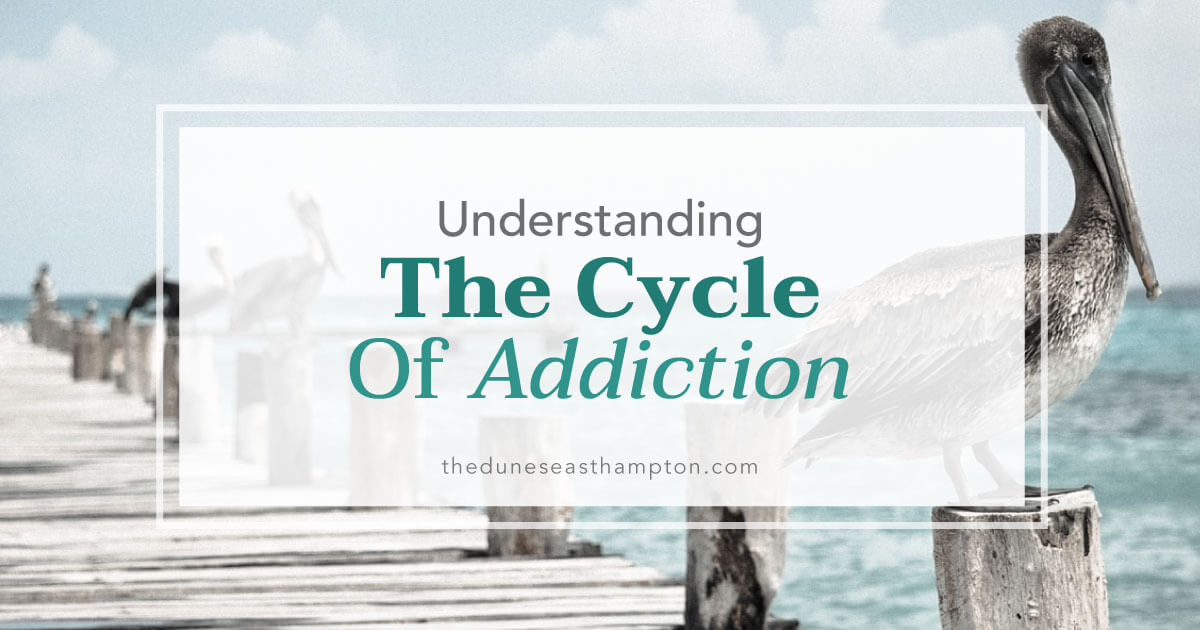
Why Experts Call Addiction A “Cycle”
People often discuss addiction as a cycle – an endless hamster wheel that can feel impossible to escape. Addiction, treatment, trigger, relapse, and addiction…does it ever end? Luckily, recovery is attainable with the right support system and treatment program. The first step toward recovery may be admitting you have a problem, but soon after that you must understand the cycle of addiction. With knowledge comes power – the power to break free.
What Is Addiction?
Addiction is a pathological relationship between the brain and a substance or behavior. Eventually, this relationship builds until the brain is dependent on the substance or behavior, rendering the user helpless in the face of powerful cravings. The user then needs substance or behavior for normal functioning. People with addictions have a compulsion to engage in an activity despite being aware of its negative consequences. The pull toward the substance or behavior overshadows all else.
Addiction deals with the brain’s reward, motivation, and memory systems. Drugs and alcohol disrupt these circuits, leading to dysfunction and toxic manifestations. Someone who is addicted may have impaired behavior control, inability to consistently abstain from the substance, diminished recognition of problems within relationships or self, and failure to control cravings. Misconceptions about addiction, such as that it only happens to people who are flawed and who lack willpower, can lead to many people to hide their addictions from others and fail to seek treatment.
Anyone Can Be an Addict
The disease of addiction can affect anyone, and it does not discriminate between race, ethnicity, age, gender, or social standing. The ongoing prescription opioid epidemic across America is a good example of how addiction can touch anyone’s life. Prescription painkiller addiction has spread into suburbs and upper-class communities, and is not just present in traditional high-drug-use areas. Prescription pain pills are highly addictive, but many users don’t realize the danger until it’s too late. Thus, the cycle of addiction begins.
Tolerance and Perpetuation
Substance abuse can quickly become an addiction when the brain builds up a tolerance to the drug or alcohol. Tolerance occurs when the brain gets used to the conditioning of the substance, and how it changes the brain’s circuits. Tolerance makes a user need to consume more of the substance to achieve the same level of high. Over time, tolerance leads to a stronger addiction as the brain and body become dependent on a certain, often high, level of chemical change. Once an addict has reached the level of tolerance, withdrawal can be even more challenging, leading to relapse and perpetuation of the cycle.
The Journey to Recovery
Once an addict realizes he has a problem, either through personal reflection or family intervention, recovery can begin. A user needs to go to a professional treatment center for proper detoxification, or purification of the body from the substance. Detox may involve medications to help ease the symptoms of withdrawal, which can include nausea, headache, shakiness, weakness, fatigue, and dizziness. The withdrawal and detoxification processes are best left to the professionals at a facility, and should not be attempted alone.
Recovery is a long, hard journey, but there is light at the end of the tunnel. With the right therapies, medications, or combination of the two, an addict can get the help she needs to move on from an addiction for good. Treatment centers will give recovering addicts the tools and resources they need to stay on track and avoid relapse. Some people respond best to community-based programs, while others may be more suited for family-based support systems. Each recovery journey is different and requires tailored treatment solutions.
Triggers and Cues
Triggers and cues often are the most difficult roadblocks to overcome on the journey to recovery. Cues lead to relapse unless the recovering addict can learn how to maintain control over this mental prison. Triggers have a very real power over a user’s mind, but there are techniques to control them. A trigger can be anything that reminds a recovering addict of his addiction, evoking the desire to use again. It may be going to a favorite bar with friends or seeing a street corner where you used to buy drugs.
Triggers work based on conditioning. During heavy substance use, the drugs or alcohol condition the brain’s reward system, connecting the stimulus of the substance with pleasure. Drugs flood the brain with dopamine, creating a “high” feeling but ultimately leaving the brain’s natural sensors weak and exhausted. As the brain becomes more tolerant to substances, the user will have to consume more and more to achieve the same high as the first time. Over time, the brain will eventually struggle to associate anything but the substance with pleasure.
During recovery, triggers remind a person of the feeling of pleasure they now associate with the drug or alcohol. The cue can immediately send a person right back to where he was at the height of the addiction, no matter how much time has passed since the start of the recovery. The first step toward controlling a trigger is recognizing its potential to send you back to square one. While avoiding triggers can be helpful, your real power comes from learning how to deal with them. Learn how to “say no” to a friend’s offer of alcohol or drugs, and remember why you quit. The more times you successfully refuse to give into a trigger, the easier resistance becomes.
Relapse and Restart
Relapse is a part of recovery for many people. This can be a normal part of recovery that does not have to mean permanently giving up – it’s just a minor setback. A recovering addict will have the best chance of preventing, or properly dealing with, relapse with help from a treatment program that involves follow-up. Follow-up is vital to recovery because it reduces the odds of relapse and holds the person accountable for his or her choices.
From here, the cycle can go one of two ways – it can restart, beginning again at the addiction stage, or it can pick back up at the recovery phase. The choice is entirely up to the recovering addict. Relapse doesn’t have to mean starting from square one. It can be just a small hiccup on the road to recovery. With the right knowledge and tools, you can successfully break the cycle of addiction once and for all.







